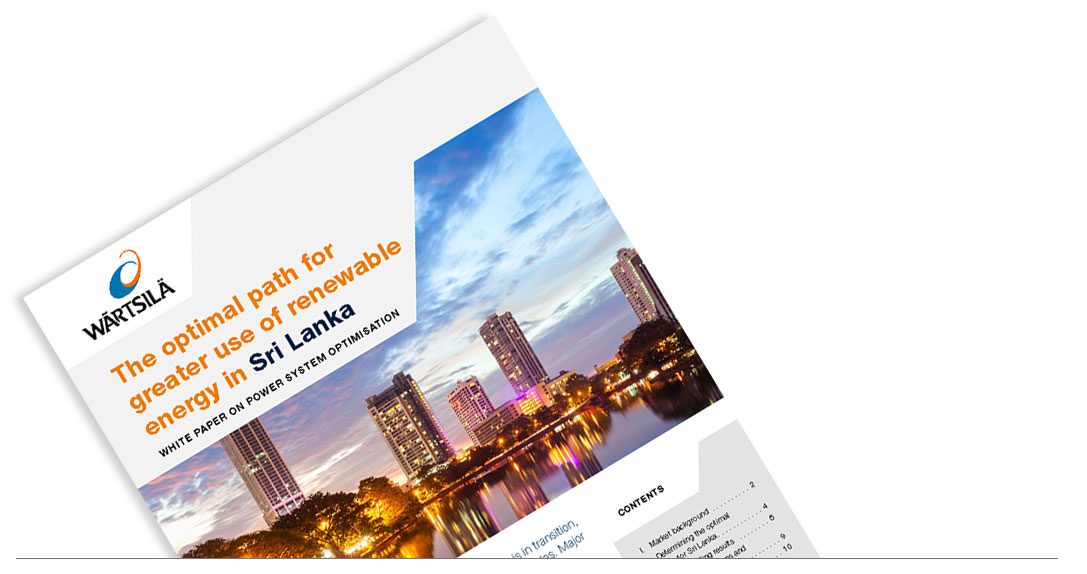

The optimal path for greater use of renewable energy in Sri Lanka
Around the globe, the energy market landscape is in transition, largely due to the rapidly decreasing cost of renewables. Major players are moving towards more flexible and sustainable energy systems with a rapidly increasing share of renewable energy, declining inflexible baseload generation, and a wider application of energy storage technology.
In contrast to this broad global trend, Sri Lanka’s current plan for new capacity development is heavily reliant on conventional thermal baseload additions, namely coal and combined cycle gas turbine (CCGT) power plants.
The purpose of this study is to compare Sri Lanka’s current development plan, the Long Term Generation Expansion Plan (LTGEP)*, with an alternative for developing the country’s power system in a more optimal way that would save costs and reduce emissions significantly.
As our modelling demonstrates, Sri Lanka could better utilise the good conditions for wind and solar power in the country. Flexibility in the form of gas-powered engine power plants – which can be ramped up and down quickly to cope with fluctuating demand – and energy storage in the form of batteries are needed to cope with intermittency. We will also show why investing in thermal baseload today will restrict the country’s alternatives in the future, whereas a flexible system will keep the option open to achieve 100% renewable power generation in the future, and indeed put the country on the right path to towards that future.
Contents
- Market background
- Determining the optimal path for Sri Lanka
- The modelling results
- Recommendations and benefits
- Conclusion

